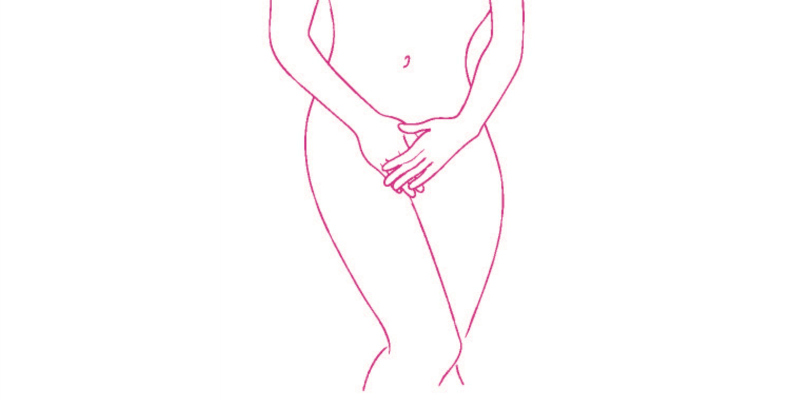By Katie Reiser | Illustration by Ann Christianson
Coming from a family of weak-bladdered women, I figured it was my lot in life to pee a little while laughing. After giving birth in 2000, things got worse in terms of “accidents” when laughing, coughing, sneezing or jumping.
In 2015 I began to feel a strange fullness and pressure in my vagina but blamed it on menopause. After going to the bathroom one day, I had the sensation that something was askew in my vagina. It felt like a tampon was inserted improperly, only I wasn’t using a tampon.
Rather than going to the doctor, I preferred to (mis) diagnose myself online. While Googling, I learned about pelvic organ prolapse. UW Health’s Pelvic Wellness Clinic appeared in my frenzy of Internet searches, so I made an appointment despite being mortified.
My anxiety turned out to be misplaced (like my pelvic organs); the friendly staff assured me they had seen it all. This is because 50 percent of women will experience some type of pelvic floor disorder by age 80. I was incredulous to learn that your bladder, rectum, small bowel, uterus and vagina can drop when the “hammock” of muscles, ligaments and tissues supporting them weakens.
Pregnancy and childbirth are common factors but others include smoking, obesity, injury, chronic constipation and chronic coughs.
My affable Urogynecologist, Dr. Dobie Giles, diagnosed me and explained treatments. In a recent conversation he explained why this condition is often shrouded in secrecy and shame. “It’s a lack of awareness combined with it being in an area of the body that people feel uncomfortable talking about. Every day I have patients say 1) ‘l thought I was the only one’ and 2) ‘I didn’t know there were options.’”
Those options include use of a pessary and vaginal physical therapy.
A pessary is a removable device inserted in the vagina to support its structure, which can mitigate some of the bulging and pressure caused by pelvic organ prolapse. Archaeologists have unearthed ancient pessaries, so clearly this has been an issue for millennia. Currently they are available in all shapes and sizes.
Vaginal physical therapy can also help relieve symptoms including urinary and fecal incontinence. Specially trained physical therapists teach techniques including Kegel exercises and biofeedback to strengthen pelvic floor muscles.
When my pessary and physical therapy didn’t give me the results I hoped for, I became increasingly depressed and frustrated. I met with Giles to discuss surgical options, which include prolapse repair (vaginally or through incisions) and the creation of a bladder sling. He was candid about possible outcomes and I decided it was worth a shot.
Dr. Giles has a theory about why the topic of pelvic organ prolapse remains taboo, “Right now there is nobody famous who wants to go on TV and say, ‘I have this.’” He added, “Even erectile dysfunction has celebrity spokesmen. It would take a very brave person to step forward.” After my surgery in 2016 I knew immediately it was successful. I laughed with friends and for the first time in decades, I didn’t have an accident. If my symptoms sound familiar, don’t continue to suffer. As Giles shared, “You’re not alone and there are things we can do.”




